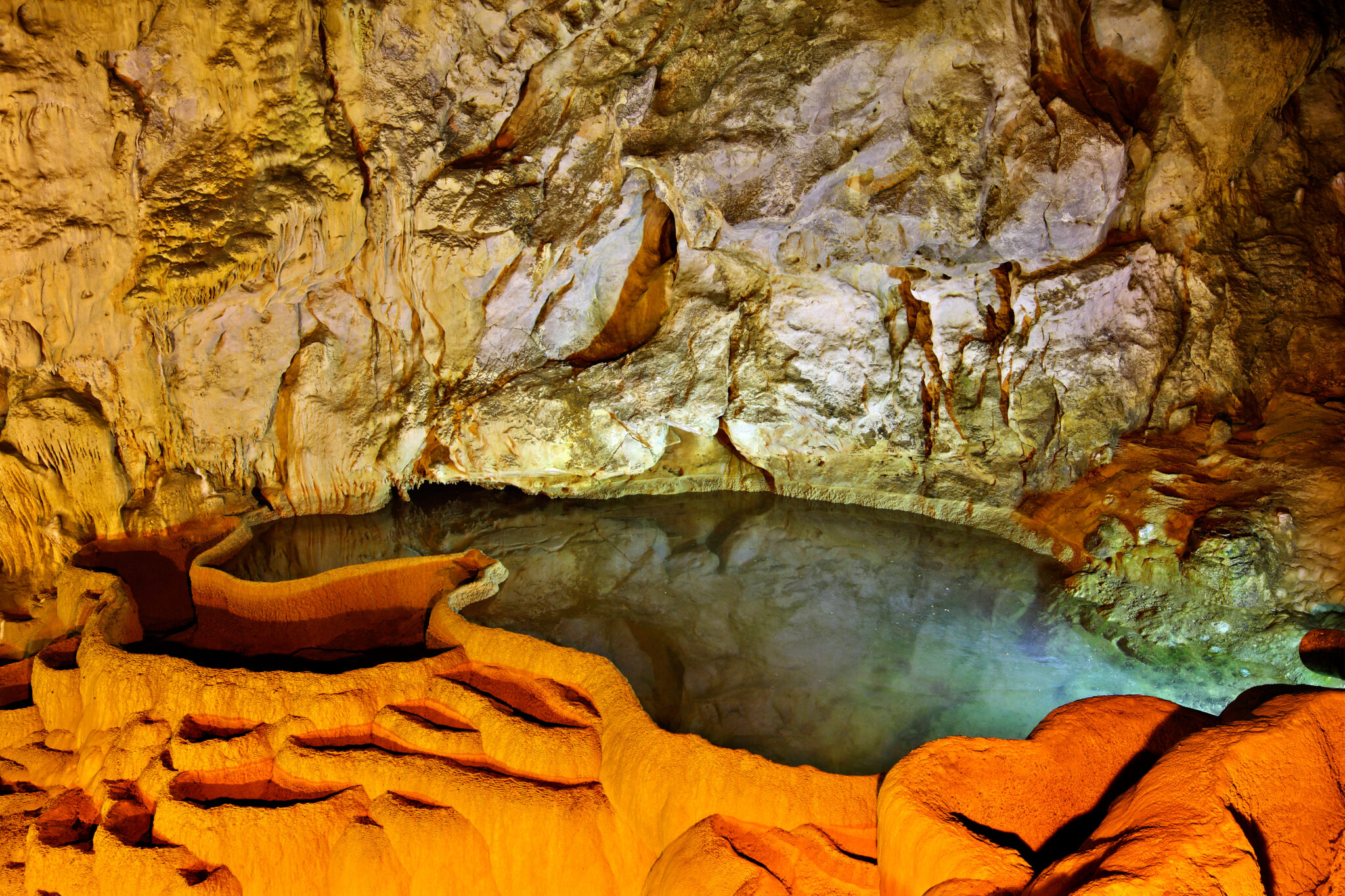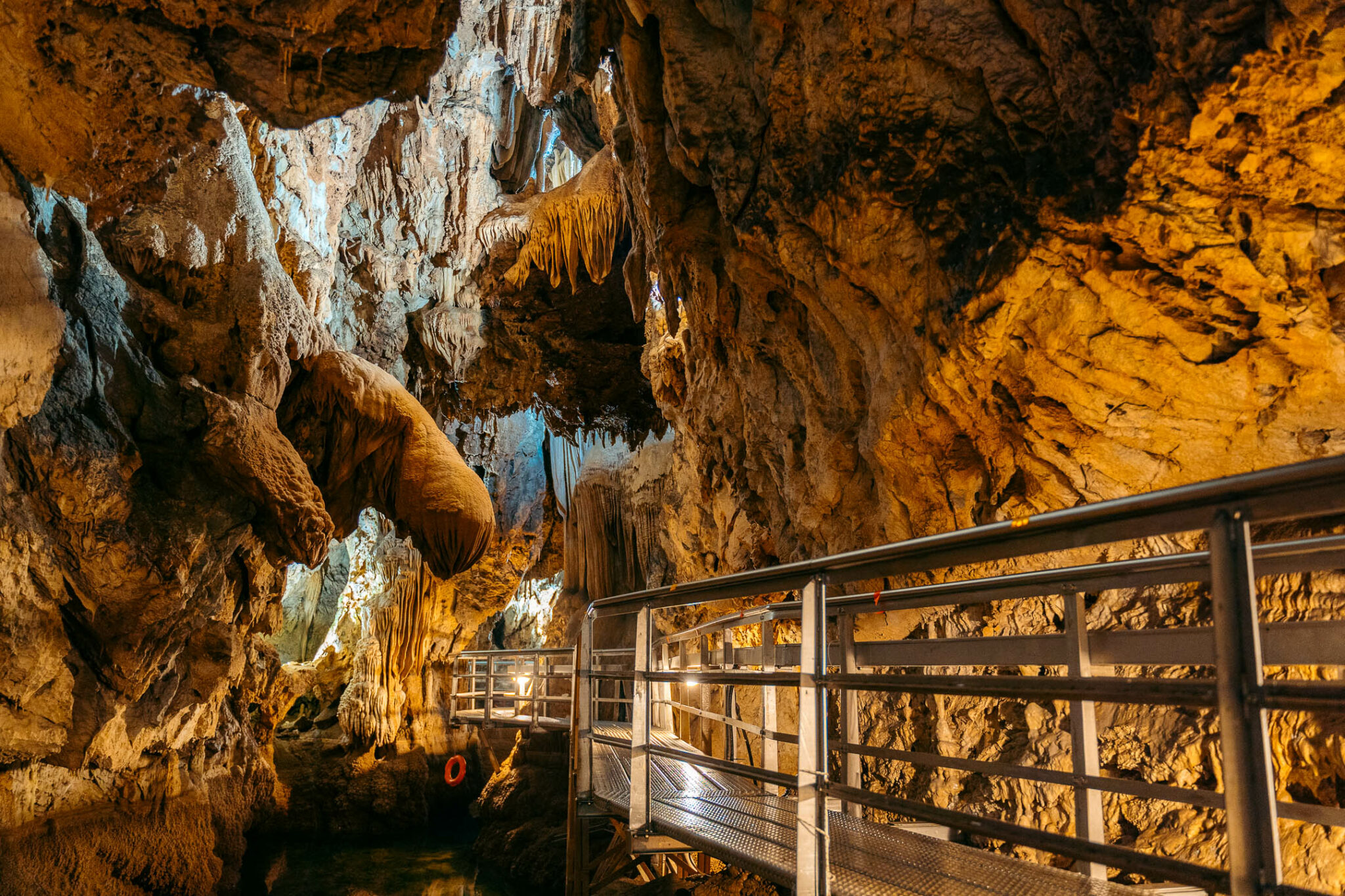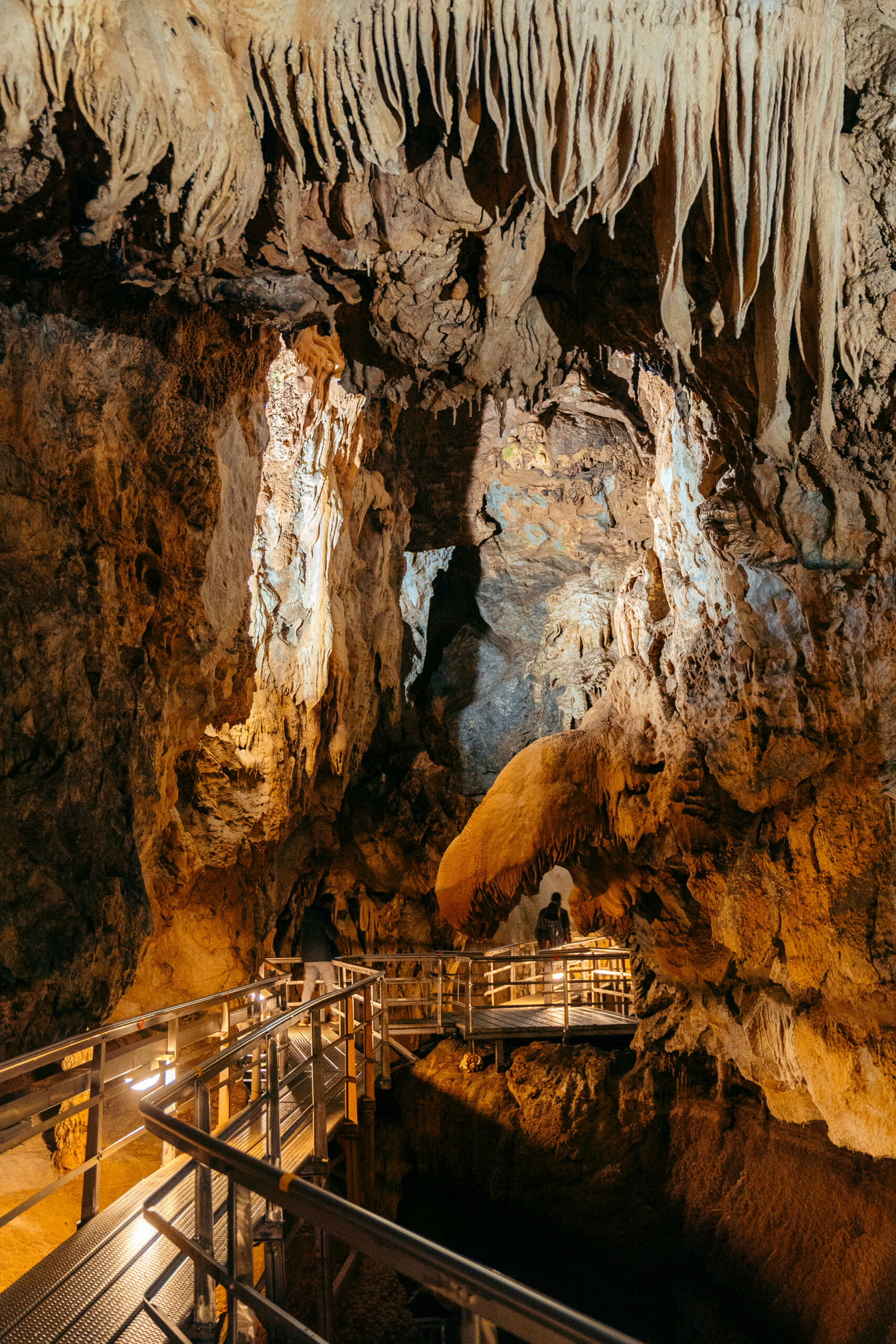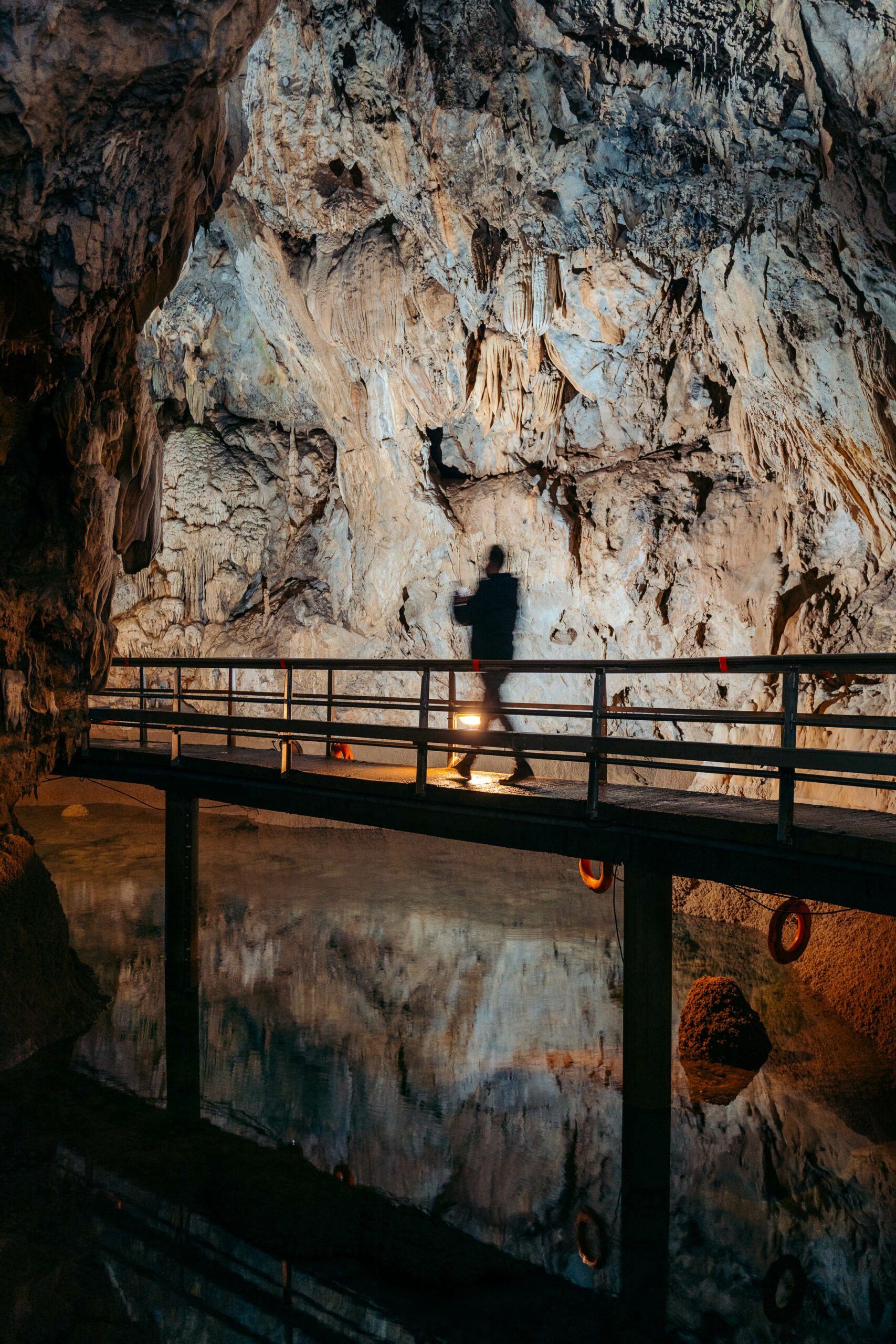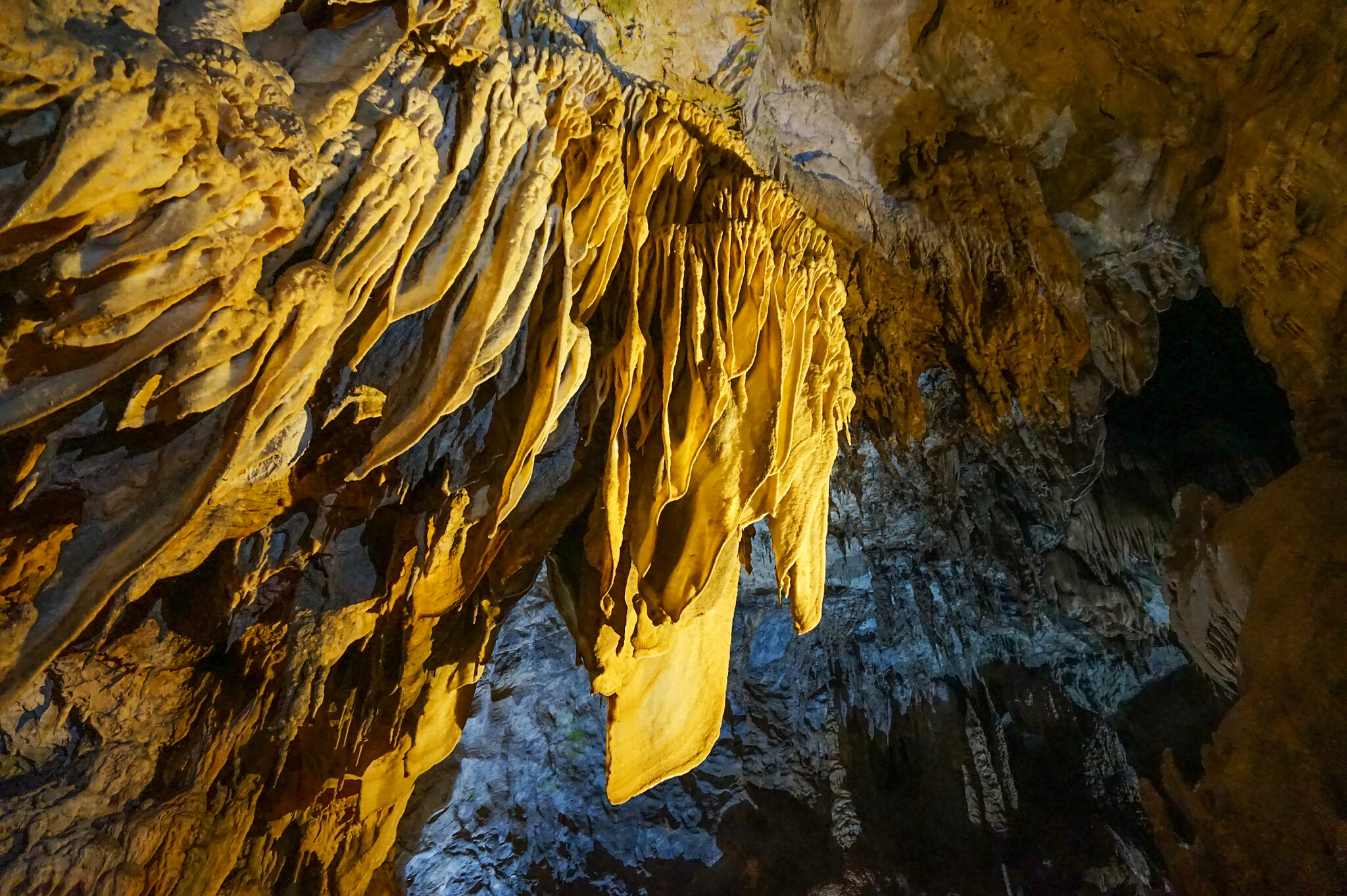Kalavryta, a lush and picturesque alpine town in the north of the Peloponnese, is one of Greece’s most popular autumn-winter destinations, drawing nature lovers, thrill-seekers and skiers who want to enjoy time away in a beautiful environment.
The mountainous town has plenty to offer its visitors: a rich and interesting history, an enticing cuisine, the Voraikos gorge, a scenic railway route, a ski resort on the slopes of Mount Helmos and the Cave of the Lakes, formerly called Troupissio.
The Cave of the Lakes, near the village Kastria in the Achaia region (around 17 km from Kalavryta) is known for its impressive succession of cascading terraced green and turquoise lakes on three levels. It is unique in Greece and one of the most extraordinary settings of its kind in the world, where significant finds were discovered tracing back to the Late Neolithic, the Early, Middle and Late Bronze Ages and the Early and Middle Helladic periods.
Part of the cave was first discovered in 1964 by villagers from Kastria, while an expedition by the Greek Mountaineering Association, with the participation of cavers from Greece and abroad, took place a few years later. In 1981, the Greek National Tourism Organisation (GNO) commenced excavation works to open up the cave to the public, which happened for the first time in 1990.
Today, a 500-metre section of the cave’s total of 1,980m explored by cavers is open to the public, starting from an entrance point that is 3.50 m high and 6.50 m wide. A tunnel that has been excavated leads visitors directly to the cave’s second of three levels, where the lakes at three different levels are incredibly impressive to see. The cave features a total of 13 lakes. The Cave of the Lakes is even more spectacular during winter or spring when there is more water.
Towards the end of the route, Kastro (meaning fortress), is one of the cave’s most impressive formations. It was named as such by Anna Petrochilou, the late president of the Hellenic Speleological Society, as the section reminded her of a fortress.
Caves in Greece are often named according to spontaneous impressions they created in the people who first explored them.
Info: The most magical moment in our 40-minute visit to the cave was when there was complete silence and we sensed we could hear the sound of stalactites and stalagmites in the water.
Opening Hours: From 9 am till 4.30 pm on weekdays and 9 am till 5.30 pm on weekends.
Tickets (which include a guided tour) are 9 euros for adults & 4.50 euros for children and pensioners.
Read also:
Plane trees and running waters in a destination ideal for a day trip from Athens, Greece
5 taverns with good food in Kalavryta
24 hours in Kalavryta: Guide for a short escape



